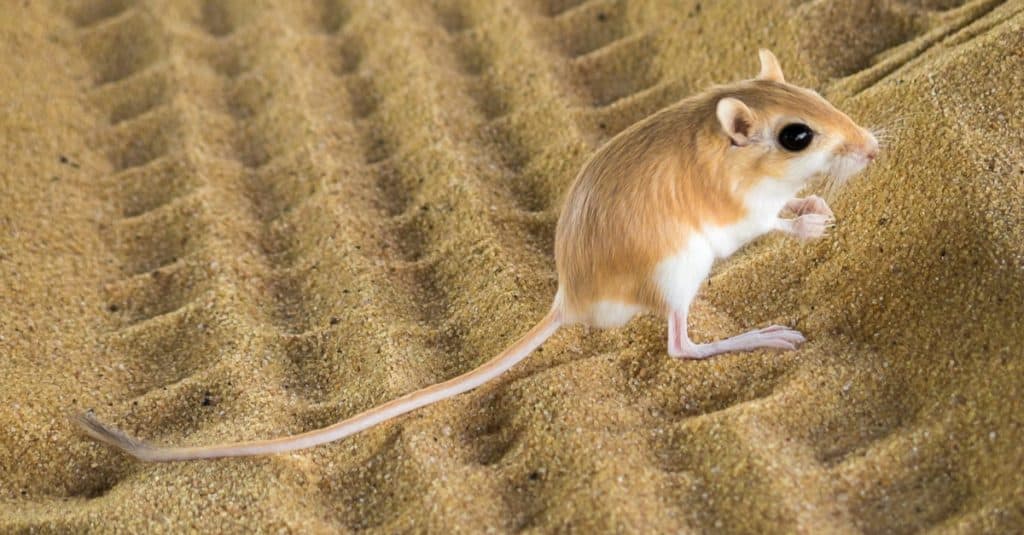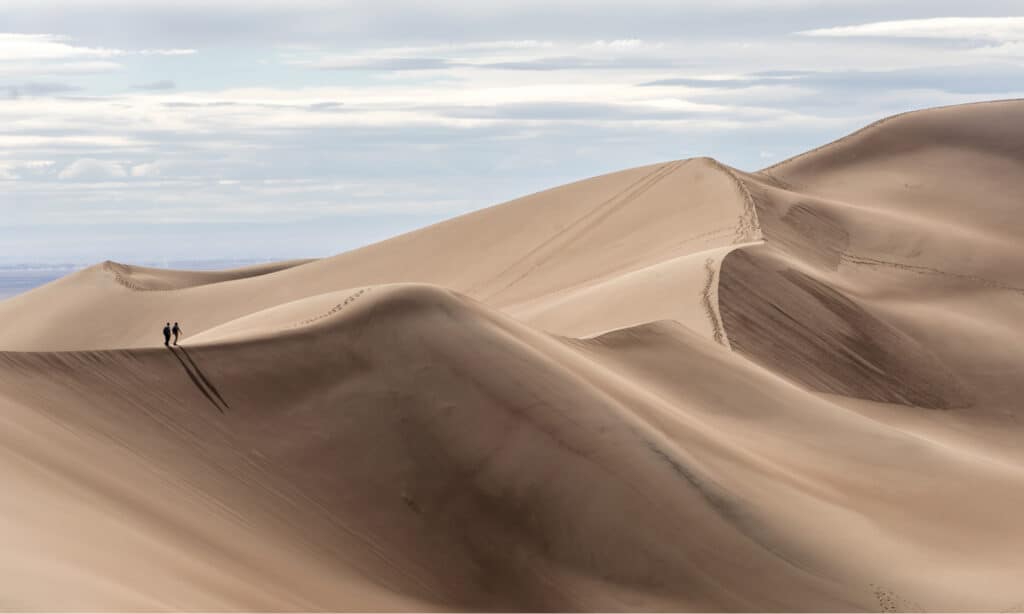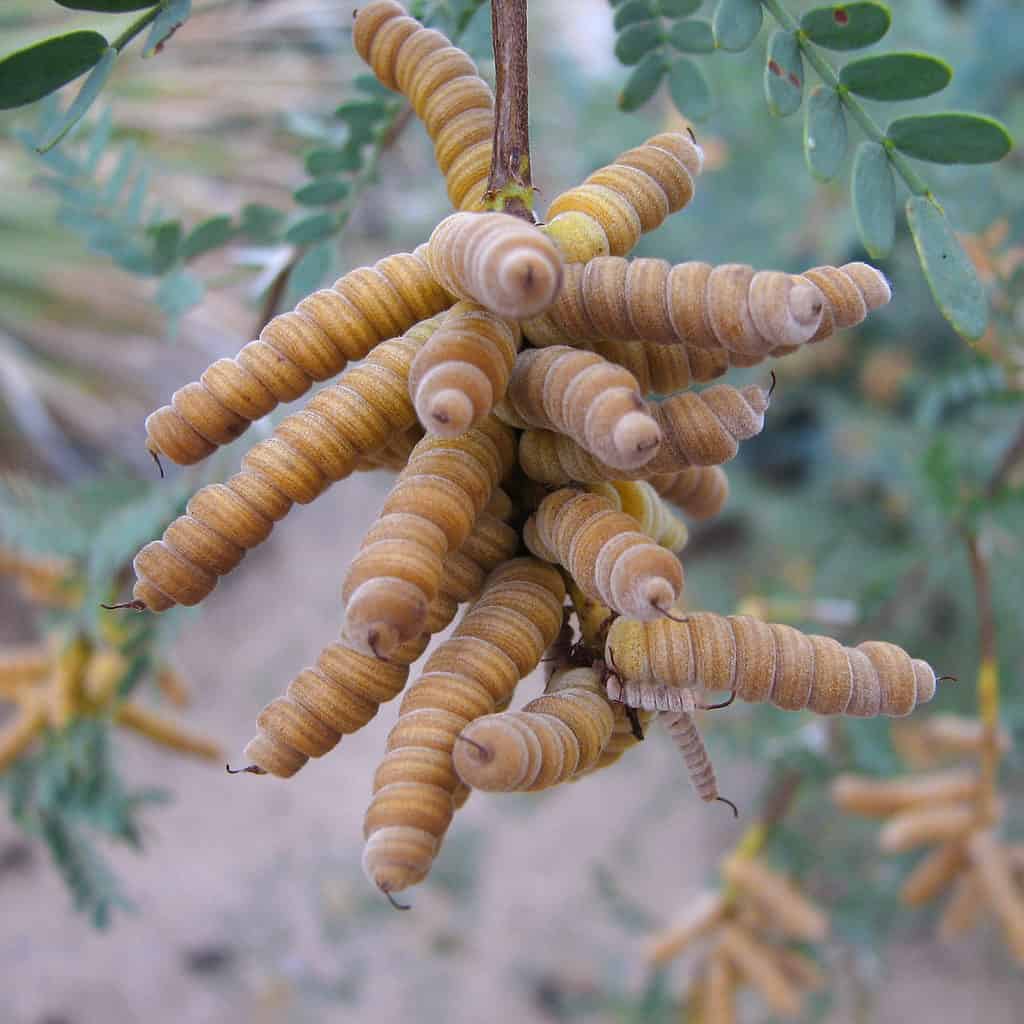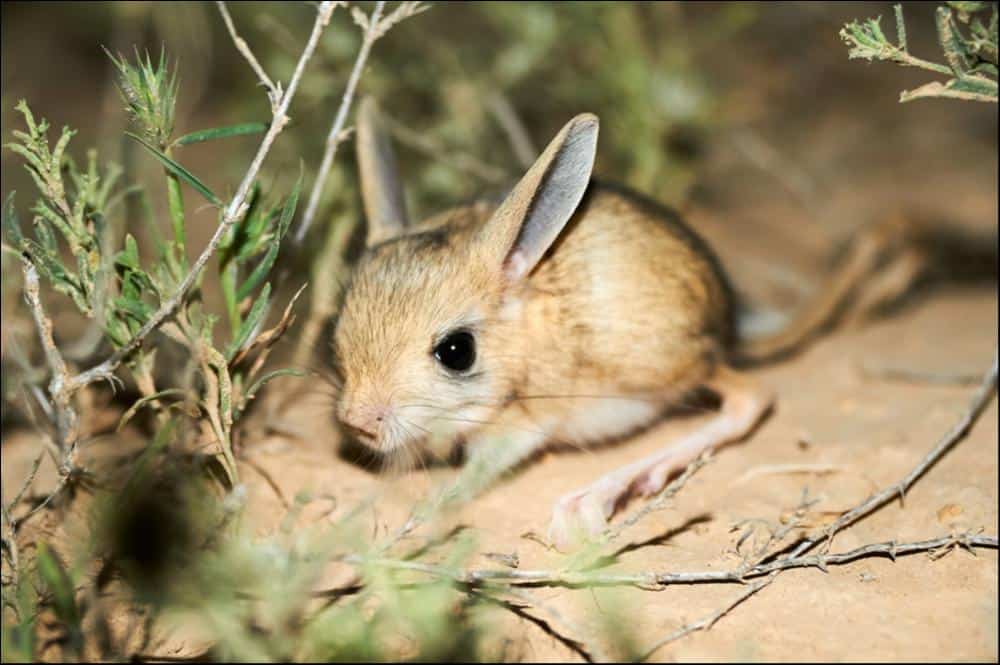Kangaroo Rat
Merriam’s kangaroo rats literally never have to drink water
Advertisement
Kangaroo Rat Scientific Classification
Read our Complete Guide to Classification of Animals.
Kangaroo Rat Conservation Status
Kangaroo Rat Facts
- Prey
- Insects such as grasshoppers
- Name Of Young
- Pup, pinkie or kitten
- Group Behavior
- Solitary
- Fun Fact
- Merriam’s kangaroo rats literally never have to drink water
- Biggest Threat
- Habitat destruction and fragmentation
- Most Distinctive Feature
- Their powerful hind legs
- Other Name(s)
- Rat kangaroo, desert rat
- Gestation Period
- 22 to 27 days
- Litter Size
- One to seven babies, though the average litter contains three.
- Habitat
- Desert
- Diet
- Omnivore
- Favorite Food
- Seeds and grasses. Some species eat insects and other types of vegetation.
- Common Name
- Kangaroo rat
- Number Of Species
- 22
- Location
- Deserts
Kangaroo Rat Physical Characteristics
- Color
- Brown
- White
- Dark Grey
- Skin Type
- Fur
- Top Speed
- 5 mph
- Lifespan
- 2 to 5 years though some giant kangaroo rats have been known to live for over 9 years
- Weight
- 4.5 ounces
- Height
- 2 to 4 inches at the shoulder
- Length
- As long as 14 inches, with an 8-inch tail and 6-inch body. Males are larger than females.
- Age of Sexual Maturity
- About 100 days
- Age of Weaning
- 22 to 25 days
View all of the Kangaroo Rat images!
Though the kangaroo rat is incredibly cute, it is one of the champions of the animal kingdom when it comes to jumping prowess.
One of these little animals can jump as much as 9 feet. If an average human could jump that distance, they would be able to jump over 20 feet at a time! Not only that, the kangaroo rat has adapted so beautifully to the desert habitat that it hardly ever, in its life, needs a sip of water.

4 Incredible Kangaroo Rat Facts!
- One of the more interesting kangaroo rat facts is despite its name and its looks, the animal is neither a rat nor a mouse. Its closest relative is the pocket gopher.
- These animals use water so efficiently that they almost never have to drink. This is especially true of Merriam’s kangaroo rat, which never needs to drink water.
- These rodents can not only jump as long as 9 feet but can switch direction very quickly between their jumps.
- Species of these animals sometimes have territories that overlap with the territories of other species of kangaroo rats.
Scientific name
The name of the genus to which these animals belong is Dipodomys. “Dipodo” is from the New Latin dipodo, which means two feet. Mys is also from the New Latin, and means mouse. This is probably because the rodent is largely bipedal and looks like a mouse. There are 22 species including:
- The Agile kangaroo rat (D. agilis) – is endemic to southern California in the United States.
- California kangaroo rat (D. californicus) – native to California, the animals habitat is changing from grasslands to desert after years of drought.
- The Gulf Coast kangaroo rat (D. compactus) – can be found in Mexico and the state of Texas in the U.S.
- The desert kangaroo rat (D. deserti) – one of the larger kangaroo rats, this species is found in desert areas of the southwestern United States.
- The Texas kangaroo rat (D. elator) – this species lives in Texas and Oklahoma in mesquite and lotebush in areas with firm clay-loam soils.
- The big-eared kangaroo rat (D. elephantinus) – lives in chaparral and is distinguished by its large ears.
- The San Quintin kangaroo rat (D. gravipes) – is endemic to Mexico and western Baja, California, this kangaroo rat lives in arid lowlands with sparse vegetation.
- Heerman’s kangaroo rat (D. heermanni) – a broad-faced species endemic to California.
- The Giant kangaroo rat (D. ingens) – the largest of the kangaroo rats is native to California but is now endangered.
- Merriam’s kangaroo rat (D. merriami) – the smallest kangaroo rat has a long tail with a tuft on the tip and lives in the southwestern United States, Baja, California, and northern Mexico.

The kangaroo rat has powerful hind legs for jumping and extra long tails for balance.
©Dominic Gentilcore PhD/Shutterstock.com
Evolution
Kangaroo rats are believed to have appeared in what is now North America during the Late Miocene Epoch, around 11.2 million to 5.3 million years ago. They have adapted to desert life to the point of not needing water to survive.
Appearance
These rodents are small, with bright, dark eyes and big round heads, and most species have four toes on each hind foot. All have powerful hind legs that allow them to jump many times the length of their own bodies. It is these hind legs that give them the name “kangaroo rat.” Their front legs are much smaller. Their tails, which are used for balance, are tufted and longer than the rest of the animal’s body. The rodent also has cheek pouches lined with fur. The rodents fill these pouches with seeds and deposit the seeds in caches found on their territory. The animal also has relatively long, soft fur in shades of brown and gray, and a white belly.

Kangaroo rats have adapted to desert life by developing powerful hind legs for jumping and getting water from seeds.
©Been there YB/Shutterstock.com
Behavior
The most notable thing about the animal’s behavior is the length of its jump. It jumps to avoid predators and also employs what’s called a move-freeze mode to make it harder for predators to find them. In this mode, they go completely still, then move suddenly.
These animals live in burrows beneath the sand or soft soil of the desert. There is only one adult per burrow. They keep to these burrows during the hottest part of the day and during storms and other bad weather and come out at night to forage. Spending all day in their burrow helps to conserve precious water and avoid predators at the same time. The burrows, like apartments, have different rooms for different activities, such as sleeping, and some kangaroo rats mate in their burrows. Their territories are usually between 200 and 300 feet around and overlap. These animals are usually solitary, but they come together to mate and find food.
Males appear to have some kind of social hierarchy, and the more dominant males have more access to the females when it’s time to breed. They’ve also been shown to fight each other by springing into the air and kicking at each other with their hind legs. Females are more peaceful.
Though these animals have a variety of vocalizations, most species communicate by drumming their feet.
Habitat

Some species, like Ord’s kangaroo rat, live in high-elevation deserts – most prefer scrubland.
©Andrew Repp/Shutterstock.com
They are found in deserts from below sea level to as high as 7000 feet above sea level. Ord’s kangaroo rat is often found at this type of elevation. This species is also notable for being able to live in burrows built in shifting sand dunes. The types of deserts where others live include scrubland, which is the home of the giant kangaroo rat, creosote flats, washes, and open grasslands.
Diet

Screwbean Mesquite is part of the kangaroo rats’ diet.
©Katja Schulz / Flickr – License
These animals’ diet is predominantly made up of seeds and beans, which they collect in their cheek pouches and take back to their territories. These seeds and beans come from such plants as creosote bushes, ocotillos, and mesquite. The animal collects more seeds than it needs at one time and stores them for later. Giant kangaroo rats allow seeds to dry out in piles or pits known as haystacks before they take them into their burrow. When seeds and other vegetation are scarce, the rodents will eat moths, grasshoppers, and other insects. They have been known to eat commercial grain such as wheat.
Predators and Threats

Bobcats are among the many predators of kangaroo rats.
©gobirdnerds/Shutterstock.com
These animals have a wealth of predators. Nearly every carnivorous animal that lives or visits the desert regards them as prey, including pet dogs and cats. Their traditional habitat is also being seized for agriculture and housing for humans.
Reproduction and Life Cycle
These rodents do not mate for life nor restrict themselves to one partner when it comes to reproduction. When a female is fertile, she will mate with many males. Before mating, the male and the female will chase each other around in a way that seems playful to a human bystander. These animals are ready to mate when they’re about three months old, and the female can produce several litters containing an average of three pups a year. The rate of reproduction is higher during years when there is abundant food.
The female is pregnant for a little less than a month before she gives birth. Before that, she makes a nest lined with fur. The babies are blind and furless. They’re weaned after about 25 days, and by their third week of life, they are independent, though they can stay with their mother for a few more months.
Population
The facts of the population depend on the species. The giant kangaroo rat, for example, is considered endangered. Ord’s kangaroo rat, which is the most common type, is considered of the least concern in the United States, though it’s considered vulnerable in Western Canada. Merriam’s kangaroo rat is also of least concern on the IUCN Red List but is considered endangered on the US Federal List.
Jerboa vs Kangaroo Rat

The Jerboa and the kangaroo rat developed many of the same adaptations to desert life – a world apart.
©Yerbolat Shadrakhov/Shutterstock.com
The jerboa and kangaroo rats evolved in different parts of the world, but over the eons developed adaptations to live comfortably in deserts and to be able to quickly evade predators thanks to powerful, springy hind legs. Differences include the jerboa’s habit of building more than one burrow. A jerboa can build a burrow for the daytime, another for night, a burrow for summer, and a burrow for winter. Jerboas hibernate during the winter, while kangaroo rats do not.
One reason why jerboas hibernate and kangaroo rats don’t is that jerboas don’t cache their food the way kangaroo rats do. Kangaroo rats can eat the seeds they have stored throughout the winter. Jerboas also can’t eat hard seeds, though they eat insects, grass, and mushrooms. They travel widely for food, while kangaroo rats do not like to leave their small territories. The jerboa also has three as opposed to four or five toes on its hind feet.
Some species of jerboa are sociable, such as the Greater Egyptian jerboa. They also occupy a greater variety of habitats, including marshes and pastures, than the kangaroo rat.
View all 77 animals that start with KKangaroo Rat FAQs (Frequently Asked Questions)
What is a kangaroo rat?
A kangaroo rat is a desert-dwelling rodent whose powerful hind legs allow it to jump long distances like a kangaroo. The animal’s long tail helps it to balance.
What does a kangaroo rat eat?
Kangaroo rats eat seeds and desert vegetation but will take insects when these food items aren’t available.
What's the difference between a jerboa vs. a kangaroo rat?
Jerboas and kangaroo rats are both desert rodents with powerful hind legs that allow them to jump great distances. One difference is that the jerboa is found in Africa, Asia, and the Middle East. Some species have long ears that make it truly resemble a miniature kangaroo.
Where do kangaroo rats live?
Kangaroo rats live in the deserts of western and southwestern North America.
How many types of Kangaroo rats are there?
There are at least 22 different types of kangaroo rats.
Why doesn’t the kangaroo rat drink water?
The kangaroo rat has adaptations to get all the water it needs from its food, which is mostly seeds.
Does the kangaroo rat die after drinking water?
It is true that a kangaroo rat can die after drinking water. This is because when it has too much water in its system, its body flushes it out. Unfortunately, this also flushes out nutrients the animal needs and can lead to its death.
Can you have a kangaroo rat as a pet?
Some people try to keep kangaroo rats as pets, but unlike mice, gerbils, and hamsters, kangaroo rats aren’t the easiest pets to take care of. Despite its small size, it needs a lot of space in which to dig and run around, and the substrate of its enclosure needs to be soft enough for it to do this. It is temperature-sensitive, must have a quantity of natural light, and has a specific diet that may be hard for the owner to obtain. Unlike hamsters and gerbils, a pet kangaroo rat does not like to be cuddled or handled.
Do kangaroo rats eat cactus?
Some species of kangaroo rats do eat the pads and just sprouted buds of some types of cactus.
What are the differences between kangaroo rats and jerboas?
The key differences between a jerboa and a kangaroo rat are their classification, appearance, and burrowing and hibernation habits. Despite their small size, kangaroo rats are slightly larger than jerboas.
Thank you for reading! Have some feedback for us? Contact the AZ Animals editorial team.
Sources
- BBC Earth, Available here: http://www.bbc.com/earth/story/20160926-the-creatures-that-can-survive-without-water-for-years
- Wikipedia, Available here: https://en.wikipedia.org/wiki/Kangaroo_rat
- Animal Wised, Available here: https://www.animalwised.com/the-kangaroo-rat-as-a-pet-432.html
- Animal Diversity Web, Available here: https://animaldiversity.org/accounts/Dipodomys_ingens/
- Arizona-Sonora Desert Museum, Available here: https://www.desertmuseum.org/kids/oz/long-fact-sheets/krat.php
- Desert USA, Available here: https://www.desertusa.com/animals/kangaroo-rat.html
- Oregon State University, Available here: http://people.oregonstate.edu/~terryr/2017/07/10/how-specialized-is-the-chisel-toothed-kangaroo-rat/

















